
Uncle Jesse tends to Boss Hogg's Still in "The Dukes of Hazzard"
DISCLAIMER:
Distilling without a license may be against the law where you live! Be sure to check the local, state, federal, and/or national laws of your country before distilling!
Dangerous laboratories does not condone or practice illegal distilling in any way, shape or form.
The information provided herein is for educational and informational purposes only.
List of materials needed:
Following is a simplified recipe. For a more traditional recipe, look here
The first thing to do is to get the yeast activated.
Pour two tablespoons of corn syrup or Sorghum Molasses into your measuring cup and add about a cup of water.
Add 1 packet of yeast and stir. Keep the cup at room temperature and wait until the mixture starts to ferment and foam up.
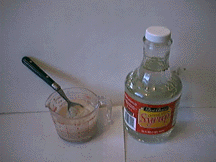
Pour the rest of the corn syrup or Sorghum Molasses into the empty milk jug and add water until it is about 2/3 full.
Use a nail to poke five holes into the cap of the jug
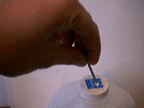
(never seal the jug - the escaping carbon dioxide gas produced by the fermentation will cause it to explode if not properly vented)
Add the yeast mixture and cap the jug.
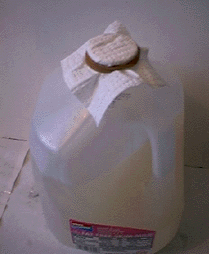
Put a piece of napkin or paper towel over the cap and secure with the rubber band
Use a permanent marker to record the date on the jug.
Put the jug in a safe location at 70-75 degrees farenheit for about 10 days.
You can put it in a sunny windowsill to bring up the temperature.
While you are waiting for the mixture (called "mash") to ferment, you can assemble the still.
This still is capable of producing 2 ounces of HIGHLY FLAMMABLE alcohol in 15 minutes.
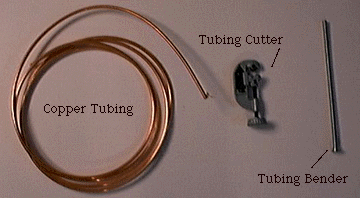
Cut off the top of the other jug, leaving the handle intact.
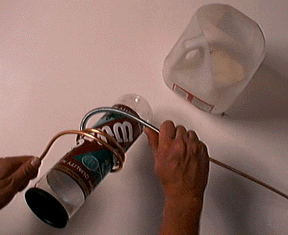
Cut off about 5 feet of copper tubing.
Use the tubing bender to wrap the coil around the tennis ball can. The spring coils of the bender will keep the copper tube from flattening and collapsing.
Grab the spring bender with both hands and work it forward as you go. The idea is to always keep the part of the copper coil that you are bending centered in the bender. Leave about 24" on the top and 6" on the bottom straight. Blow through the tube to make sure that there is no blockage.
Drill a 1/4" hole about 1 1/2" from the bottom of the jug. Put the bottom part of the tubing through the hole. Bend the coils inside the jug so that no other part of the tubing touches the sides of the jug. Use lots of sealant on the inside and outside the jug to seal up the hole and hold the bottom part of the coil in place. Allow the sealant to dry overnight
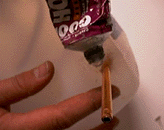
Use the 1/8" bit to drill several holes in the top of the jug. Wrap wire around the top part of the coil that sticks up . Use the wire to center the coil so it doesn't touch the jug and is held in place in a sturdy manner.
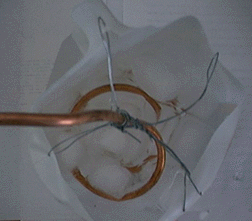
Fit the rubber stopper into the mouth of the teakettle to assure a snug fit. Remove the stopper and drill two holes into the stopper with the 3/16" bit.
NOTE: The below picture is for demonstrational purposes only! We used a pair of "vise-grip" pliers to hold the cork while actually drilling! Do not try to hold the cork with your fingers while drilling!
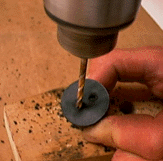
Use vegetable oil to lubricate the end of the 24" piece of copper tubing and the meat thermometer. Insert the small end of the tubing and the thermometer into the stopper as pictured. Insert the stopper onto the mouth of the kettle. Never glue or tie the stopper down! This is a safety device! If there was a blockage in the tubing, the excess pressure would blow the stopper (shooting hot alcohol and steam all over-not good) instead of exploding the kettle (much worse).

You now have a working still!
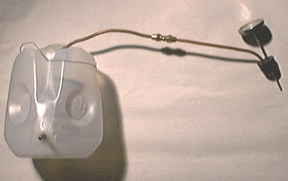
Set up the kettle on your electric hotplate (never use an open flame!) and your coil-jug (condenser) on a sturdy surface next to it. Try to slightly elevate the hotplate and teakettle so it is higher than the output tube on the condenser.